Simply speaking, pushing and pulling film allows you to gain more contrast and grain for an artistic effect. Photographer Jay P. Morgan compares how pushing and pulling affects images using Fuji 400, Portra 400 and Portra 800 films:
What is Pushing and Pulling Film?
Let’s say you load your camera with Portra 800 film but set the camera’s ISO to 1600. This will tell the camera that the film is more sensitive to light than it actually is—more sensitive by one stop. The camera will thus meter so that the film becomes underexposed by one stop. To compensate for this, the film will need to be left in the developer for a longer time. This will push the film to get a properly exposed image. And along with exposure, the image also gains some extra contrast and grain.
Contrarily, taking the previous example of Portra 800, if you set the camera’s ISO to 400, you tell the camera that the film is less sensitive than it really is. This overexposes the film by one stop. And to compensate for the extra exposure, the film will need to be left in the developer for a shorter time. This will pull the film to get a properly exposed image. As a result, the film won’t be too dense and will carry its own creative effect with decreased contract and decreased grain.
“Pushing and pulling film is more about creating contrast and grain. It’s more of an artistic look than it is a way to save film or to give you more exposure.”
Comparing Pushed and Pulled Film Stocks
Film Stocks Pulled by One Stop
Comparing the images from the three films, all of which were taken indoors in contrasty lighting and pulled by one stop, here’s how Morgan feels about them:
- all have similar contrast with nice grain
- color seems a little cleaner on the Portra 400
- Portra 400 and Fuji 400 are very similar
- a little heavy contrast on the Portra 800
Moving on to the images taken outside in low contrast lighting and pulled by one stop, Morgan has these opinions:
- skin tone appears nice on the Fuji 400
- Portra 800 has the most contrast but all images are very flat
- Portra 400 appears yellowish
Film Stocks Pushed by One Stop
Next, looking at the images taken indoors with contrasty lighting but pushed one stop, Morgan makes these observations:
- Fuji 400 maintains a good contrast
- Portra 400 appears clogged up
- Portra 800 is very deep and heavy
- Fuji 400 handles the push very well with nice grain and skin tone
Going back the images taken outside in flat lighting and pushed one stop, Morgan has these opinions:
- all images appear similar
- Portra 400 renders very nice colors and grain but the contrast is a little on the heavier side
- all the films build good contrast in flat lighting
- Fuji 400 renders the best skin tone
Film Stocks Pushed by Two Stops
Having a look at the images from the film stocks taken indoors and pushed two stops, Morgan notices the following:
- the contrast in the Fuji 400 is not so heavy as in the other two and looks pretty good
- Portra 800 is shifting toward green in a bad way
Moving outside in that flat lighting with the stocks still pushed two stops, here’s what Morgan has to say:
- Fuji 400 renders pretty colors and grain with balanced contrast
- Portra 800 is being pushed to the limits and has lost its color rendition
Key Takeaways
- Fuji 400 is very flat when pulled while the Portra 400 and Portra 800 look better when pulled.
- When pushed by a stop or two, Fuji 400 looks beautiful.
- If you like grain and heavy contrast, Portra 800 pushed two stops is the film for you.
What’s your favorite look from all of these?
Like This Article?
Don't Miss The Next One!
Join over 100,000 photographers of all experience levels who receive our free photography tips and articles to stay current:
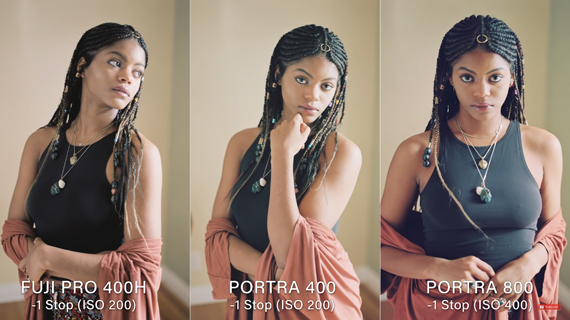

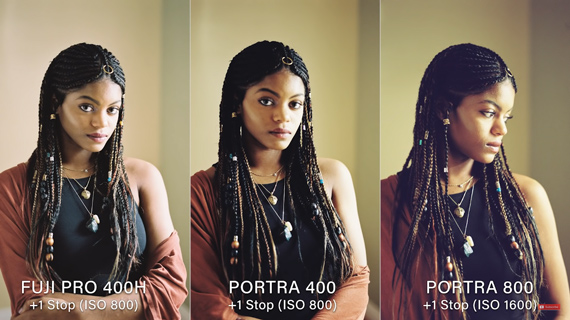
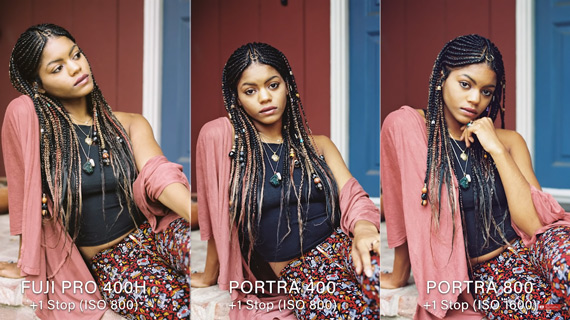
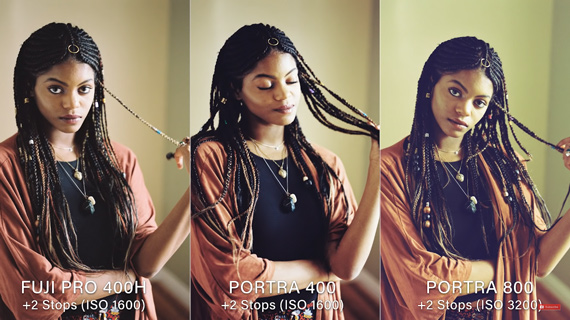
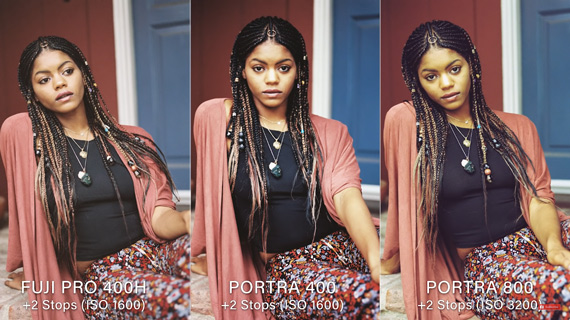






Leave a Reply